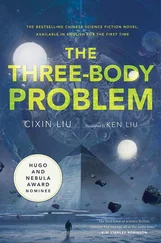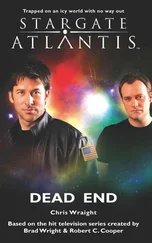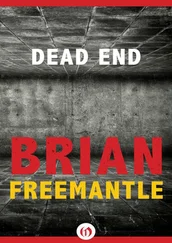“We’ll meet twice more to brainstorm and see if we can come up with a few more options. But we might as well get started on the feasibility study for en-route propulsion. We’ll need a code name.”
“Since the probe’s velocity would go up a level each time a bomb explodes, it’s a bit like climbing a flight of stairs,” Vadimov said. “I suggest we call it the Staircase Program. Besides the requirement of a final velocity exceeding one percent of lightspeed, another parameter to keep in mind is the mass of the probe.”
“A radiation sail can be made very thin and light. Based on the current state of material sciences, we can make a sail of about fifty square kilometers and limit the mass to about fifty kilograms. That should be big enough.” The speaker was a Russian expert who had once directed a failed solar sail experiment.
“Then the key will be the mass of the probe itself.”
Everyone’s eyes turned to another man in the room, the chief designer of the Cassini-Huygens probe.
“If we include some basic sensors and take into account the necessary antenna and radioisotope power source to transmit information back from the Oort Cloud, about two to three thousand kilograms ought to do it.”
“No!” Vadimov shook his head. “It has to be like Cheng Xin said: light as a feather.”
“If we stick with the most basic sensors, maybe one thousand kilograms would be enough. I can’t guarantee that’s going to succeed—you’re giving me almost nothing to work with.”
“You’re going to have to make it work,” said Wade. “Including the sail, the entire probe cannot exceed one metric ton in mass. We’ll devote the strength of the entire human race to propel one thousand kilograms. Let’s hope that’s light enough.”
—————
During the next week, Cheng Xin slept only on airplanes. As part of a task force led by Vadimov, she shuttled back and forth between the space agencies of the US, China, Russia, and Europe to coordinate the feasibility study of the Staircase Program. During that week, Cheng Xin got to travel to more places than she had in her life up to that point, but she didn’t get to do any sightseeing except through the windows of cars and conference rooms.
At first, they had thought they could get all the space agencies to do a combined feasibility study, but that turned out to be an impossible political exercise. In the end, each space agency performed an independent analysis. The advantage of this approach was that the four studies could be compared to get a more accurate result, but it also meant that the PIA had to do a lot more work. Cheng Xin worked harder on this project than anything in her professional career—it was her baby, after all.
The four feasibility studies quickly reached preliminary conclusions, which were very similar to each other. The good news was that the area of the radiation sail could be shrunk to twenty-five square kilometers, and with even more advanced materials, the mass of the sail could be reduced to twenty kilograms.
Then came some very bad news: In order to reach the required speed of 1 percent of lightspeed, the mass for the entire probe assembly had to be reduced by 80 percent—to only 200 kilograms. Subtracting the mass reserved for the sail left only 180 kilograms for sensors and communication devices.
Wade’s expression didn’t change. “Don’t be sad. I have even worse news: At the last session of the PDC, the resolution proposing the Staircase Program was voted down.”
Of the seven permanent members of the PDC, four voted no. Their reasons were surprisingly similar. In contrast to the technical staff of the PIA with background in spaceflight, the delegates were not interested in the propulsion technology. They objected that the probe’s intelligence value was too limited—in the words of the American representative, “practically nil.”
This was because the proposed probe had no way to decelerate. Even taking into account the fact that the Trisolaran Fleet would be decelerating, the probe and the fleet would pass by each other at a relative speed of around 5 percent of lightspeed (assuming the probe wasn’t captured by the fleet). The window for gathering intelligence would be extremely small. Since the small mass of the probe made active sensors such as radar impractical, the probe was limited to passive sensing, mainly of electromagnetic signals. Given the advanced state of Trisolaran technology, it was almost certain that the enemy would not be using electromagnetic radiation, but media such as neutrinos or gravitational waves—techniques beyond the current state of human technology.
Moreover, due to the presence of sophons, the plan for sending a probe would be completely transparent to the enemy, making its chances of successfully gathering any valuable intelligence nonexistent. Considering the enormous investment required to implement such a plan, the benefits were too minuscule. Most of the plan’s value was purely symbolic, and the great powers were simply insufficiently interested. The other three permanent members of the PDC voted yes only because they were interested in the propulsion technology.
“And the PDC is right,” said Wade.
Everyone silently mourned the Staircase Program. Cheng Xin was the most disappointed, but she comforted herself that as a young person with no record of achievements, having gotten this far on her first original idea wasn’t too bad. Certainly, she had exceeded her own expectations.
“Ms. Cheng, you look unhappy,” Wade said. “Apparently you think we’re going to back off from the Staircase Program.”
Everyone now stared at Wade, speechless.
“We’re not going to stop.” Wade stood up and paced around the conference room. “From now on, whether it’s the Staircase Program or any other plan, you do not stop until I tell you to stop. Understand?” He dropped his habitual indifferent tone and screamed like a crazed wild animal. “We’re going to advance! Advance! We’ll stop at nothing to advance!”
Wade was standing right behind Cheng Xin. She felt as if a volcano had erupted behind her, and she cringed and almost screamed herself.
“What’s our next step?” asked Vadimov.
“We’re going to send a person.”
Wade had resumed his calm, emotionless voice. Still in shock at his explosion, it took a while before those in the room understood what Wade meant. He wasn’t talking about sending someone to the PDC, but out of the Solar System. He was proposing sending a live scout to the bleak, frigid Oort Cloud one light-year away to spy on the Trisolaran Fleet.
Wade kicked the leg of the conference table and sent his chair flying backwards so that he could sit behind everyone as they continued to discuss. But no one spoke. It was a repeat of the meeting a week ago when he had first brought up the idea of sending a probe to the Trisolaran Fleet. Everyone tried to chew over his words and unravel the riddle. Shortly, they came to see that the idea wasn’t as ridiculous as it seemed at first.
Hibernation was a relatively mature technology. A person could complete the voyage in suspended animation. Assuming the person weighed 70 kilograms, that left 110 kilograms for the hibernation equipment and the hull—which would resemble a coffin. But what then? Two centuries later, when the probe met the Trisolaran Fleet, how would they wake this person up, and what could he or she do?
These thoughts revolved inside the heads of everyone present, but no one spoke up. But Wade seemed to be reading everyone’s minds.
“We need to send a representative of humanity into the heart of the enemy,” he said.
“This would require the Trisolaran Fleet to capture the probe,” Vadimov said. “And to keep our spy.”
Читать дальше












